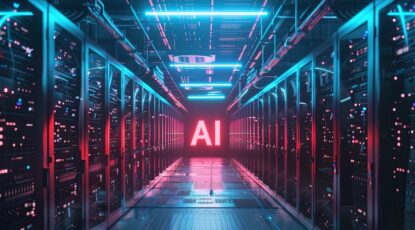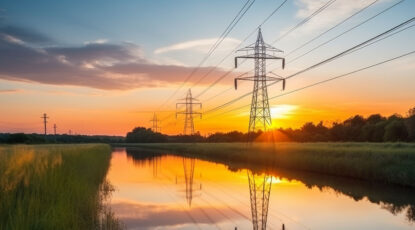California just faced historic blackouts. In fact, it endured three of the largest planned power outages in state history. The era of intentionally cutting off power to residents and businesses across the state to prevent wildfires – known as Public Safety Power Shutoffs (PSPS) – has arrived, and it’s highlighting the urgent need for energy solutions that address both the causes and consequences of climate change.
Battling the climate crisis and reducing greenhouse gas (GHG) emissions are top of mind for California officials. Last year, Governor Brown took steps toward decarbonizing one of the state’s largest sources of emissions – the building sector – by signing Assembly Bill No. 3232 into law. This bill requires a 40% reduction in GHG emissions from buildings by 2030.
In an attempt to hit this ambitious target, some California cities have already passed prohibitions on new gas infrastructure for the residential sector. For example, cities like Berkeley and Menlo Park passed ordinances to incentivize all electric buildings; their goal is to stop combusting natural gas to heat spaces and cook food.
These ordinances are meant to address the causes of climate change (i.e. rising emissions), but what about the consequences (i.e. power shutoffs)? As power outages become the new normal and California’s electric grid struggles to cope with a changing climate, these well-intentioned efforts will need a backup plan.
California must consider energy resiliency along with sustainability
This summer, California’s three largest utilities announced they would be implementing PSPS events for 48 hours or more to prevent wildfires. October alone saw a handful of multi-day PSPS events, two of which affected millions of people across the state.
A combination of climate change events and an aging electric grid has left California’s electricity supply vulnerable and unable to reliably service the state. Aside from wildfire-induced safety shutoffs, extreme heat has caused blackouts for thousands in Southern California and failing grid infrastructure has led to rolling brownouts for Glendale residents.
Without electricity, home heating and cooling are not possible, medicine and food in refrigerators may spoil, toilets may not flush, hospitals cannot perform surgeries, and 911 and other emergency centers may be disrupted. Many of these worst-case scenarios came true during the historic shutoffs.
Reliance on dirty backup power will make a bad situation worse
What is the current solution to power shutoffs? Dirty diesel generators. Since PG&E, SCE, and SDG&E began PSPS events, demand for dirty back-up generators has spiked, in some cases by 1,400 percent.
In another example, the City of Lathrop is budgeting almost $40,000 per day to buy diesel to power its critical facilities, which will result in burning 10,000 gallons of diesel a day during PSPS events.
As the California Air Resource Board has rightly highlighted, these emissions threaten human health: operating an uncontrolled one-megawatt diesel engine for only 250 hours per year results in a 50 percent increase in cancer risk to residents within one city block. This is not a solution – it’s a harmful, ill-advised approach.
Non-combustion fuel cells are a decarbonization solution
Bloom Energy Servers, which leverage solid oxide fuel cells to produce clean power, are a solution to decarbonizing buildings – both today and in the future. By generating electricity using a non-combustion process, all-electric fuel cells provide clean power at high efficiencies and virtually eliminate particulate emissions.
A recent third-party impact evaluation of California’s Self Generation Incentive Program found that natural gas-powered all-electric fuel cells generated the largest GHG reductions of any of its technology counterparts, actually decarbonizing the buildings they powered.

2016-2017 Self-Generation Incentive Program Impact Evaluation: Respectively, the two figures show greenhouse gas impacts by technology type and year, and criteria air pollutant impacts by technology type in 2017. The technology types in the program included: advanced energy storage (AES), CHP fuel cells (FC-CHP), electric-only fuel cells (FC-Elec), gas turbines (GT), internal combustion engines (ICE), microturbines (MT), pressure reduction turbines (PRT), and wind turbines (WD).
The exciting thing about fuel cells is that they are ideal building blocks for microgrids – localized energy systems that can operate independently of the electric grid. A microgrid with fuel cell and renewable generation sources enables communities to ride out lengthy PSPS events while avoiding reliance on dirty diesel generators and harmful air quality impacts.
Bloom’s technology is also renewable ready, with the ability to operate on biogas and renewable hydrogen. Energy Servers installed today that run on natural gas can be readily upgraded in the future.
Additionally, Bloom Energy Servers are capable of exporting heat when needed, replacing existing building heating systems that use natural gas combustion or inefficient electrical technologies. This is done without compromising electrical output, furthering Bloom’s decarbonization impact to building heating systems.
Fuel cells leverage resilient infrastructure
Critically, Bloom Energy Servers keep running even when the grid goes down. Why? Because the underground pipeline infrastructure that Energy Servers leverage for fuel is more resilient than the aging electric grid. It stays on during PSPS events; it’s a key backup asset that is increasingly important when preparing for, and responding to, climate-related disasters.
To provide one example, just this summer during the severe Ridgecrest earthquake, the pipeline survived: “The resilience of California’s natural gas transmission and distribution system was tested when the most powerful earthquake in 20 years struck […on] July 5. Initial assessments indicate that the system held up.”
So why not just leverage our existing underground infrastructure? True resiliency involves utilizing multiple, existing energy systems.
Plus, as energy advances are made, underground pipeline infrastructure can be used to transport biogas and renewable hydrogen—providing 100% renewable, uninterruptible power—to further decarbonize California’s buildings.
As Lawrence Livermore National Laboratory (LLNL) recommends, California’s economic and climate goals “may be best served by a combination of electrification and dramatic reductions in the carbon intensity of the existing gas network.”
We should thoughtfully encourage resilient technologies, leverage existing infrastructure, and encourage a multitude of approaches to hit the state’s building decarbonization goals. Fuel cells have a critical role to play in California’s decarbonization while making sure the lights stay on, businesses remain up and running, and medical devices are there to help patients, even when the power goes out.
By adopting policies that address both the causes and consequences of a changing climate, the state can provide the most comprehensive protection for our communities and our businesses.



